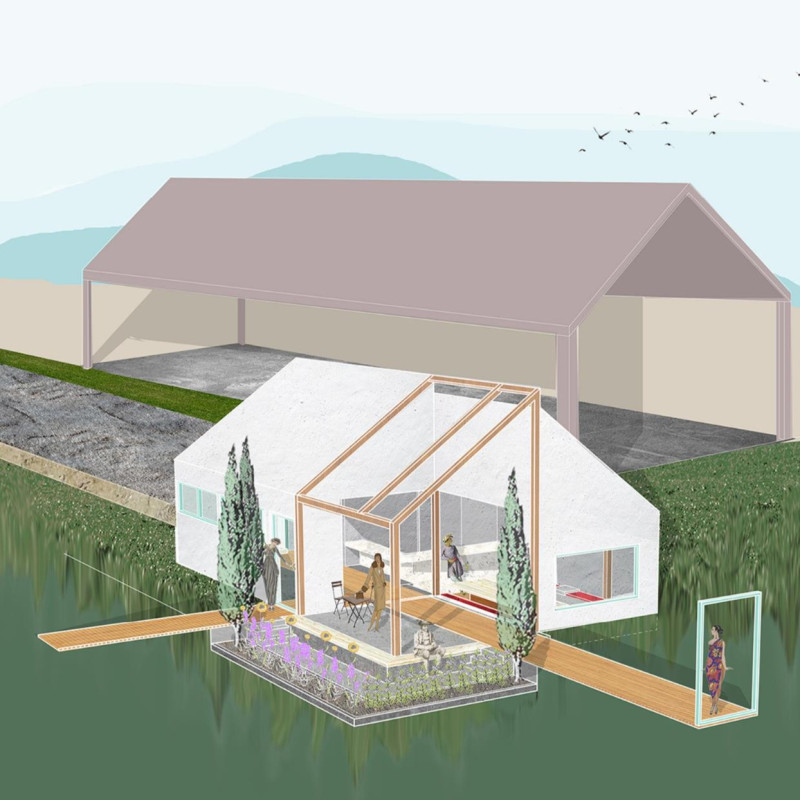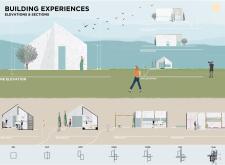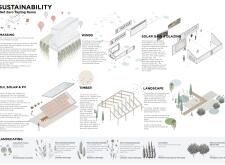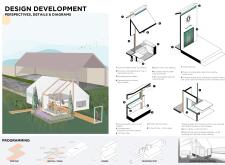5 key facts about this project
The design of the tasting room is located within a picturesque vineyard landscape, focusing on the connection between the building and its natural surroundings. The concept draws from autolysis, representing the breakdown of components to reveal deeper richness and complexity in the visitor experience. The space is designed to accommodate both small gatherings and larger events with versatile and adaptable configurations.
Conceptual Framework
The structure features a segmented design that creates an impression of a box opening up to showcase the beautiful vineyard views. This arrangement allows for a variety of spaces, making it easy to shift from intimate settings to more expansive areas. A central bar connects an elevated tasting area with a lower lounge, enhancing social interaction and allowing for a smooth flow of movement throughout the interior.
Environmental Integration
Natural ventilation is a key aspect of the design, responding to environmental factors to maximize the stunning views. The building massing has solid walls on the southern side that provide privacy, while the northern facade remains open for framing picturesque scenes. This approach balances seclusion and openness, contributing to an inviting environment within the tasting room.
Sustainable Practices
A strong commitment to sustainability is evident in the design, with the aim of achieving a net-positive energy balance. Pitched roofs facilitate stack ventilation and support the installation of photovoltaic panels, ensuring that the building produces more energy than it consumes. This focus on ecological responsibility is apparent in the design’s layout and operational approaches that enhance resource efficiency.
Material Selection
Materials have been chosen carefully to align with the building’s objectives. The facade is made of light-colored plaster that improves thermal performance by reflecting heat, adhering to traditional design elements. The internal wooden structure adds warmth and comfort to the space while reinforcing the relationship between the architecture and the surrounding environment.
The design results in a carefully considered space that encourages engagement with the surroundings. Framed views of the vineyard connect with the interior experience, creating a narrative that intertwines nature and architecture.






















































